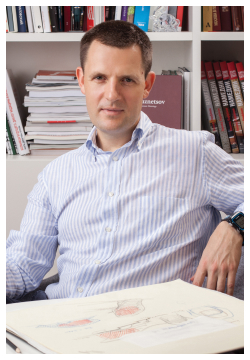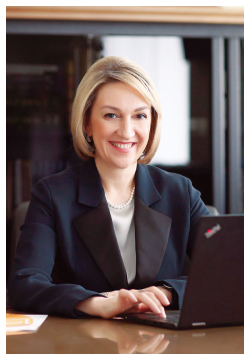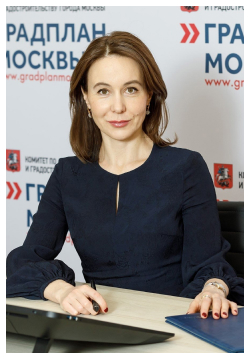FOR URBAN DEVELOPMENT
OF THE CITY OF MOSCOW


GRADPLAN MOSCOW – single urban development operator of
all waterfront areas of
Moskva river and Khimki reservoir
more info in brochure «My River»
chief architect of Moscow, first deputy chairman of the Committee for Architecture and Urban Planning of Moscow
The current trend in development of capital cities is harmonious and effective use of assets for urban development. One key such asset is a city’s river. Creation of riverside areas, transformation of such areas, and quests for new urban-planning solutions for historical embankment areas are a global trend and a strategy by which to create a highly comfortable environment, influence a city’s image, change how cities look, and increase capitalization of adjacent areas. Successful examples are the embankments of Barcelona, Amsterdam, New York, Bilbao, and London; these embankment areas have been made part of the social life of the cities in which they are situated.
Following world practice, the Moscow authorities decided to launch new scenarios for urban life in the city’s riverside areas and create a qualitatively different visual image for the river. In 2014 an international competition was held for proposals for urban development of areas abutting the River Moskva. This competition was the starting point for far-reaching changes. Realization of the development concept has already involved the upgrading of tens of kilometres of embankments with the result that the embankments of the Moskva are becoming centres of attraction and social life for those who live in the city. Pedestrian and vehicular bridges are being designed and built and new sites that are emblematic of the city are coming into existence. Zaryadie Park is one example. The waterside area will become accessible to the public and Moscow’s principal aquatic artery, until now a ‘barrier’, will become a connecting link in the city’s structure.
Chairman of the Committee for Architecture and Urban Planning of the city of Moscow
One of the main priorities for the development of Moscow is to improve the comfort and convenience of living in our city. To this end, Moscow uses a programmatic approach, establishing systematic projects for improving ecology, and accessibility by transport and for developing specific territories. We aim to create infrastructure with affordable medical, sports, and educational institutions; but it is also our intention to establish conditions which are conducive to an active and fully satisfying lifestyle and to give Muscovites the opportunity to spend more time in the fresh air. We see creating a quality urban environment which is maximally suited to healthy leisure for our citizens as a way of eliminating differences in the quality of public amenities between the city’s central and peripheral districts.
It is precisely for this reason that Moscow, like other megalopolises in the world, is continuing to look for optimal solutions for its riverside areas. Moscow’s principal aquatic artery is a highly important recreational and revitalizing resource for citizens and an engine driving the regeneration of the city as a whole. Reconstruction of the embankments involves creating pedestrian, running, and cycle paths and new public spaces, including children’s playgrounds and sports areas, areas for walking in, and beach zones. All this will make it possible to create conditions whereby Muscovites can both relax in comfort by the water’s edge and take part in active sports; it will also substantially improve the city’s ecological framework.

director of State Research and Design Institute for Urban Development of the city of Moscow
In 2014 a competition was held in the Russian capital to find a concept for urban development of territories abutting the river Moskva. The competition demonstrated the depth of interest in this subject and revealed prospects and possible scenarios for development of riverside territories. Its winner was a consortium headed by Proekt Meganom, together with whom in 2015 the Moscow Architecture Committee created a further concept for urban development of riverfront territories until 2035. In December 2016 the city’s executive appointed the State Research and Design Institute for Urban Development of the City of Moscow to be the sole city operator for realization of the concept of urban development of territories abutting the River Moskva and Khimki Reservoir. In 2018 the institute was given responsibility for coordinating projects devised for the embankments of the River Moskva with regard to interaction with the executive authorities on the federal and regional levels and with investors.
We updated the concept proposed by the competition winners and raised it to a new level in its approach to developing territories in terms of urban planning and architectural and spatial design. Today development of the riverfront territories of the River Moskva is a megaproject whose purpose is to create a continuous linear city centre with an identically high quality of urban environment, public spaces, and public amenities along its full extent. Our objective is deep analysis of various aspects and determination of the parameters for urban development of territories, strategic planning, and development of design solutions for individual sites, while also coordinating planners and developers and checking their design proposals for compliance with the key principles which we have elaborated together with the Moscow Architecture Committee and which been approved by the city’s executive. These principles are: territorial coherence, creation of public spaces, a well-developed social infrastructure, high-quality areas of vegetation, landscaping of the embankments, formation of a proper riverfront, and preservation of local identity – in short, everything that ensures a systematic approach to improving the quality of the urban environment. An important part of our work is identifying the interests of the urban community: we have used mass sociological surveys of residents of and visitors to the riverside territories and embankments to determine what kind of amenities are needed in these locations if people are to enjoy comfortable leisure.